While creating a series of articles on Eco-Friendly living, I became intrigued by the idea of Indoor Composters that are used to “recycle” your kitchen scraps and turn them into nutrient-rich fertilizer.
I’ve tried outdoor composters in the past, with limited positive results and some very negative results (including undesirable wildlife).
The idea of an indoor, super fast compost bin was very intriguing as it would allow me to:
- Reduce my household waste and limit what ends up in local landfills
- Create natural & nutrient-rich fertilizer to use in the gardens
- Reduce my carbon footprint by creating bigger, healthier plants and trees
I have been collecting and using coffee grinds in my garden for several years, and this felt like this was a natural next step.
I reached out to the good people at Food Cycle Science, and they were nice enough to provide me with one of their units to try it out and discover for myself how well these units work and how quickly and easily they can turn kitchen waste into wonderful fertilizer.
From Food to Fertilizer in Under 3 Hours!
According to the company website, this machine can complete the full compost cycle in less than 3 hours, and uses about 0.8kwh of electricity to complete the process. That is about the same amount of power your 50” Flat Screen TV or a small microwave uses on an average day.

Plus, the FoodCycler comes with a built-in sensor that automatically turns off the machine when the cycle is complete, so that smaller batches require less energy consumption and larger batches don’t end early, before all of the work has been done.
Initial Impression of the FoodCycler Indoor Composter Bin
When the unit arrived, the first thing I noticed was the color. I was expecting it to be black, but the color is more of a gun-metal gray. I think that is smart because it easily blends into most kitchens, whether you have white, black, or stainless steel appliances.
Eventually, as things often do, they will probably come out with a line of designer colors… but there’s nothing wrong with a nice looking gray.
It is also a bit smaller than I was expecting. About the size of a bread maker, it fits easily on my counter where the old Microwave used to go. And with a slight slant to it that isn’t as noticeable in the Website pictures.
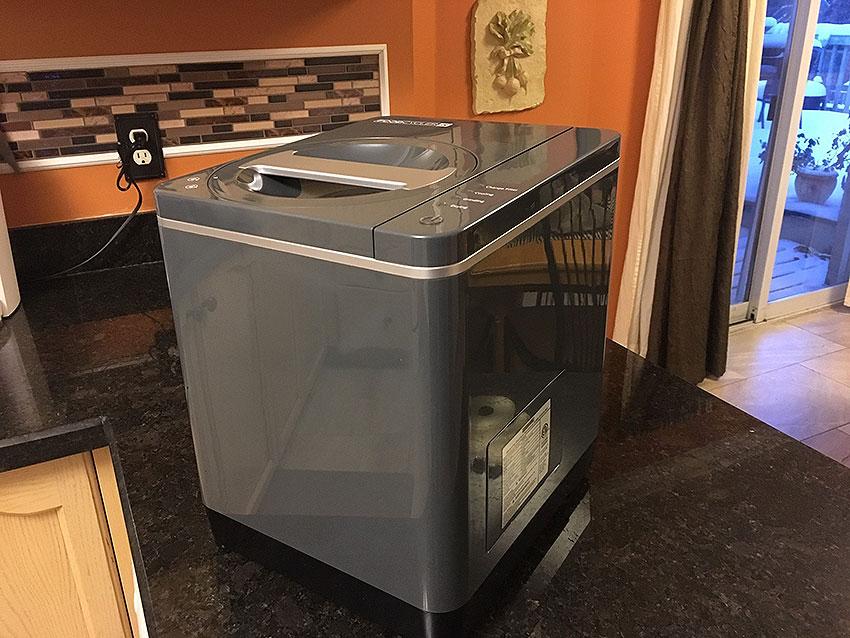
However, I will probably not keep it on the counter long-term, as it really can be anywhere there is a plug as long as it has enough room to ventilate properly.
Setup was pretty easy, but you need to check around & inside the unit to make sure you remove all of the “Remove this before using” stickers, because there are quite a few of them.

How the FoodCycler Indoor Composter Works
Using the unit was easy as they suggested, I simply put everything into the bucket (being careful not to exceed the “Max Fill” line, put the basket into the machine and turned it on.

You can hear the machine start doing its job, but it’s not disturbingly loud. The machine emits a moderate whirring noise, about equivalent to the sound level of a good dishwasher.
Probably loud enough that you wouldn’t want it running beside you while you were entertaining company in the kitchen, but quiet enough that as soon as I turned my attention to the Netflix show I am currently binge watching... I no longer noticed the sound.
Although I would normally do this before going to bed to give the unit plenty of time to run the full cycle and cool off before it was time to empty it, I wanted to get the “full experience” so I turned it on right away.
It worked EXACTLY as I expected based on the information provided by the company website. I find it rare when a product lives up to the hype, but I’m happy to say that this one did.
Watch the Video Below for more information:
PROS & CONS of the Food Cycler Indoor Food Recycler (So Far)
PRO: The setup was easy, and it took only a few moments to fill it and get it started. Once it was running, it was really quiet (for the few minutes that I listened to it before turning on some Netflix), and there was no smell at all.
CON: The basket is a bit smaller than I would have liked, which means a large buildup of food might take two (or three) full cycles to burn through. I used to have an indoor compost bin just for collecting compost that went out with my weekly trash (in a different container, of course), but now I will use the FoodCycler container instead and then pop it into the FoodCycler when it gets up to the Max Fill line.
NEUTRAL, BUT WORTH NOTING: The product states that it comes with 2 replacement filters to help eliminate odors. What isn’t clear is that the unit uses 2 filters at a time. Because the filters need to replaced about every 3 months, I thought the unit arrived with enough filters to last for 6 months… but that’s not actually the case. At $25 a pop, you’re potentially looking at $100 or more each year in replacement filters. Hopefully, in time, the cost of the replacement filters will come down as demand increases.
SUGGESTION: I wish there was an option to purchase a second cast iron bucket that came with a “decorative” housing (or – at least – a lid). Something you could keep on the counter for adding scraps as they are created. That way, you could lift the full bucket out of the container, pop it into the FoodCycler, and run the cycle.
Something like this, for example, would work really nicely:
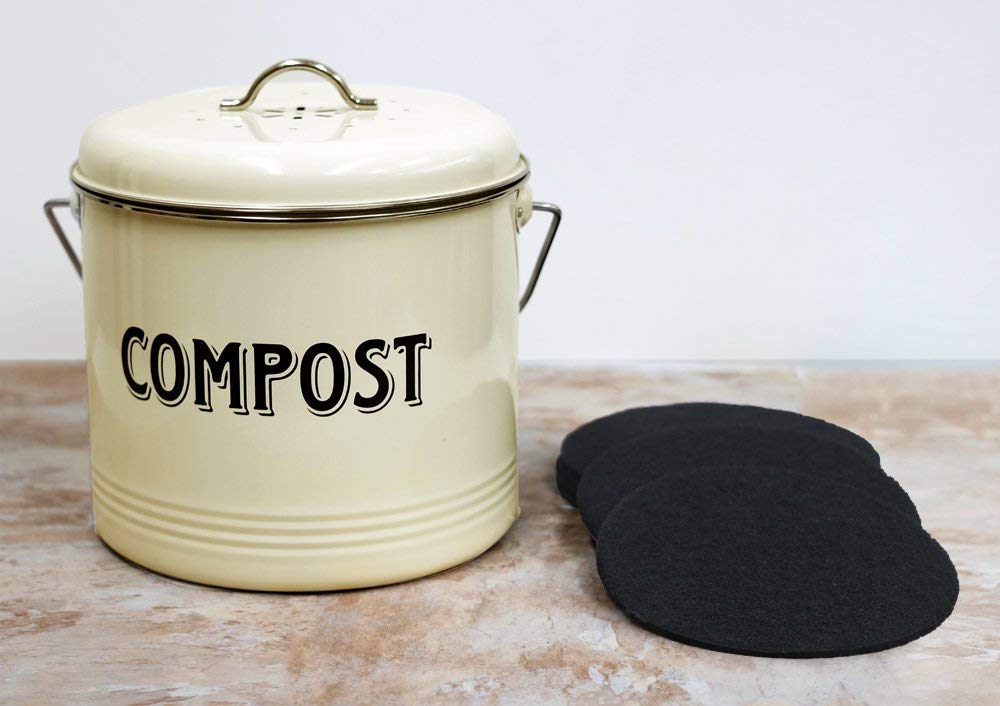
I’m sure that, if I shop around, I can find something that will fit… but it would be nice if that was an option – even as an upsell – direct from the FoodCycler folks, because that way you would know it fits.
And having a second bucket could come in really handy when you have a continuous flow of scraps to deal with.
What the FoodCycler Indoor Compost Machine Can & Cannot Handle
The FoodCycler appears to be able to tackle almost any kind of everyday kitchen waste.

Although it can even take smaller chicken or fish bones, the unit was not made to process large bones, such as beef or pork bones, so those should not be added to your compost mix.
Other items that are a no-go for the FoodCycler include candy or gum, cooking oils or greases, large fruit pits, nuts and other hard shells, as well as pineapple leaves (although I’m not sure why).
The company also recommend that you should not include processed paper products, including paper towel… especially if they have been used in conjunction with chemical cleanings. However, coffee filters are good-to-go, so you can dump the entire basket of grinds – filter and all – right into your FoodCycler.
For my own test run, I included a variety of food scraps including some coffee grinds, a slice of stale bread, pomelo rinds, leftover Chinese vegetables, half a tomato, excess chopped onion, and an egg shell.
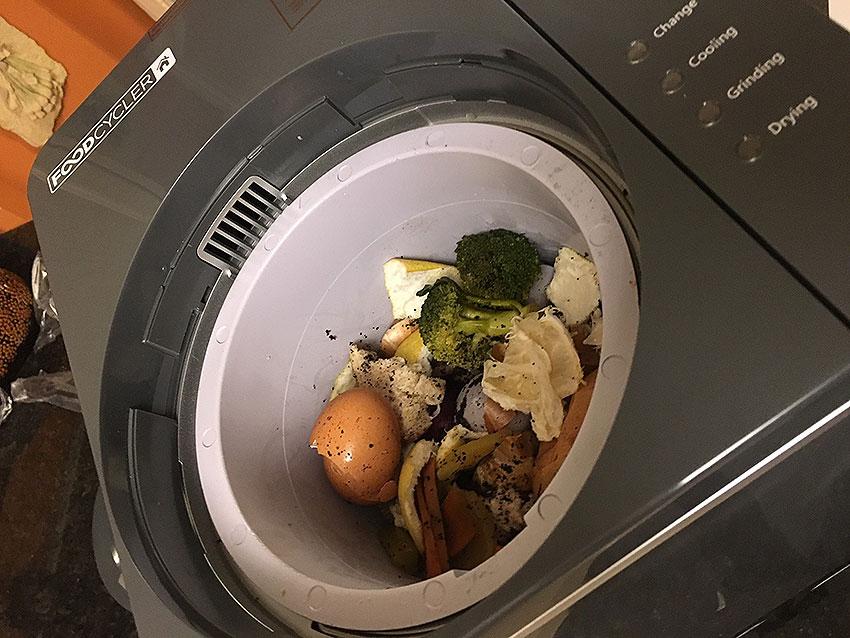
Long term, I haven’t decided if I will FoodCycle my coffee grinds or continue to put them into the garden “uncooked”, but I can always try both ways and see which yields the better result in the garden.
Once it’s full and ready to go, simply close the lid and press the start button.
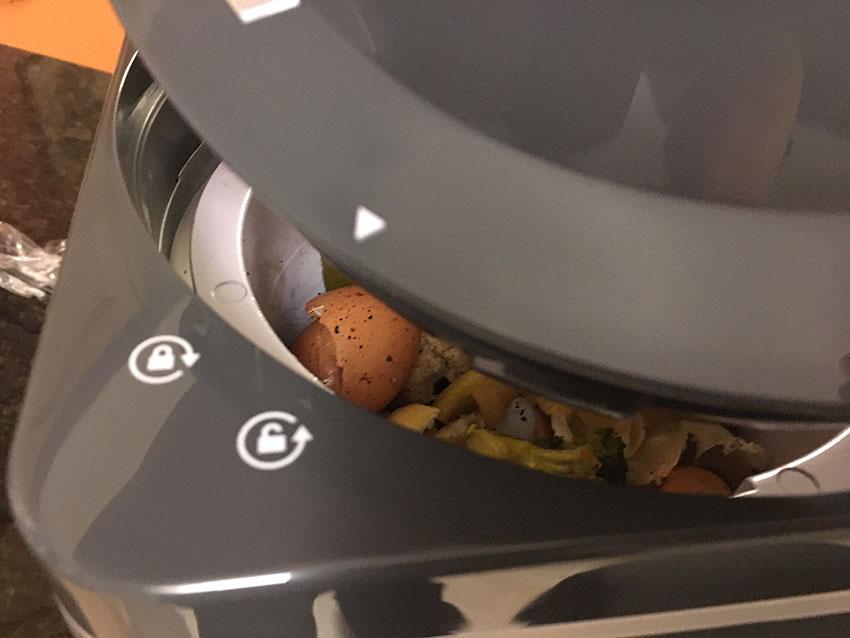
The End Result of the FoodCycler Cycle
The first run took about 5 hours to complete, but I have to admit that I fed it a pretty HARDY meal for its first go round. I had been saving my scraps for a few days while I awaited its arrival, so I doubt I would need to run it quite that full in the future.
When the FoodCycler was done its business and had sufficiently cooled down, I opened it up to see what was left.

I was surprised by how much smaller the recycled food waste was than what had gone into the unit. It really does cook and grind it down quite well.
And the consistency was different than I had expected. Based on what I put in, I ended up with fertilizer cereal/potpourri mix instead of your traditional compost texture.
Reading further, it seems that what you get out of the FoodCycler will be different based on the type of food waste you put into it. Some items, such as leftover fish or cooked vegetables, will come out as a fine powder form; uncooked veggies will have more of the “chips” or cereal looking compost that I got. Sweets and starches come out with a thicker, chunkier texture.
Which means every batch will likely have a slightly different consistency.
For best results, they do recommend trying to keep a variety of food types in the FoodCycler at all times, so don’t try to compost an entire batch of badly baked muffins all at once (not that I have EVER made bad muffins or anything).
What to do with the composted food waste?
Having a large yard with many gardens, I have no doubt that I will find PLENTY of uses for this nutrient rich fertilizer once Spring arrives. Until that time, I am collecting the processed compost in a covered bin (along with my uncooked coffee grinds), and I should have a significant collection by the time gardening weather arrives.
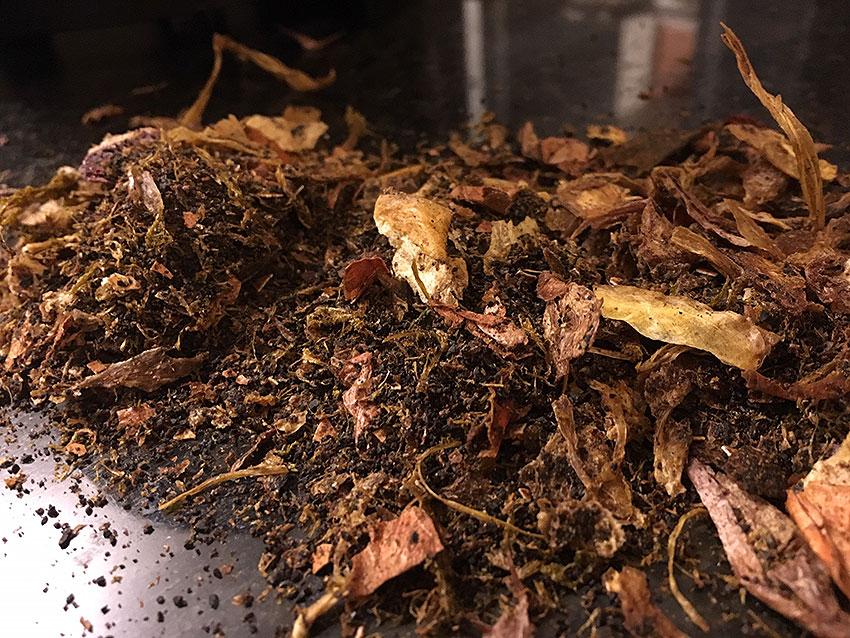
The recommended mix is 1 part Foodilizer to 11 parts soil of garden soil, although I can absolutely see myself sprinkling this mixture directly into my garden or spreading it onto my lawn.
I think my Day Lilies will LOVE it!
Does the FoodCycler Live Up to the Hype?
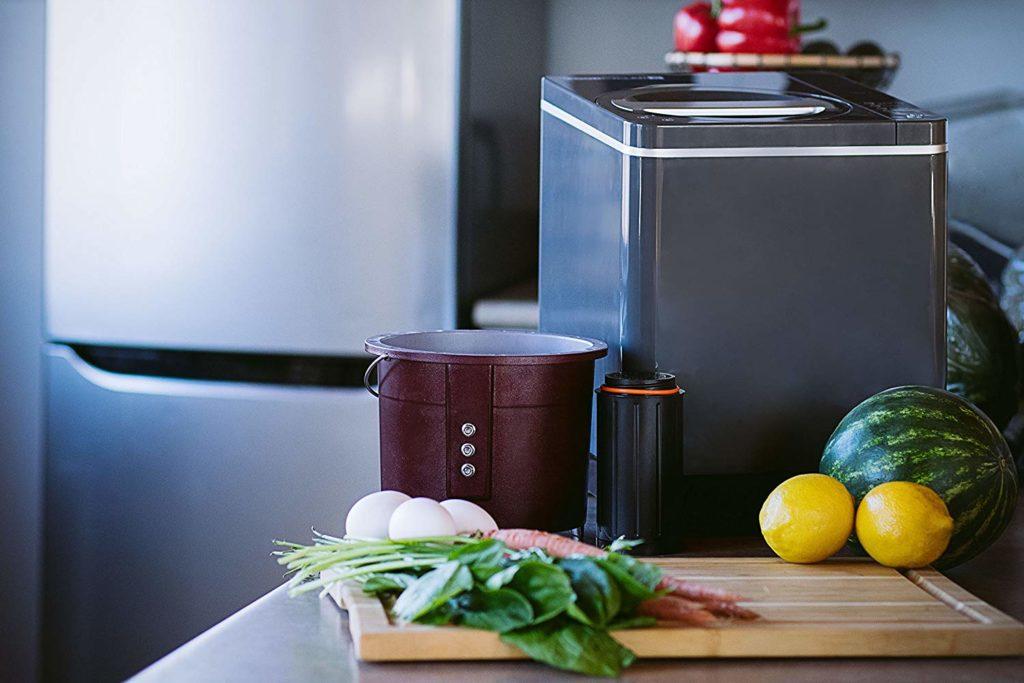
If you’re thinking of purchasing a Food Cycler, I would highly recommend it. The unit I tested did exactly what it said it would do, and I was quite pleased with the results.
They are available directly from the manufacture’s website or from our affiliate partner Amazon.com.
Editorial Note: FoodCycle Science provided the unit at no cost for the purposes of this review, but we did not guarantee a positive review in exchange. Art & Home maintains an affiliate relationship with Amazon.com and may receive compensation for any sales generated from links to their site.
A Final Warning:
Perhaps because of my online interest in these machines, I recently started seeing quite a few ads for similar units on Facebook. Looking at their machines and the offers, which were priced FAR below what these units should cost, it became obvious to me that many of these “offers” were, in fact, SPAM posts… and I deeply question if anyone who ordered from those links would ever get what they paid for.
Although there are several known and trusted manufacturers of indoor food composters, be aware when looking at competitive models to make sure you purchase your Indoor Food Composter from a reputable retailer.
As the saying goes, if it seems too good to be true, it probably is.
The End Result: Our Final Review Tally
In the end, I would consider this a winner, giving it a rating of 4.5 out of 5.

A slightly bigger compost bin, an attractive companion bin option, and more color choices would have boosted it all the way to a solid 5.
I think they need to do a better job on the website of making it clear that the filters you receive are the minimum required and are not “replacement” filters, but I haven’t deducted points from the actual machine for that.
The FoodCycler by Food Cycle Science is easy to use and does the job well. This compact unit takes food waste and turns it into nutrient-rich fertilizer in only a few hours. We recommend the FoodCycler for the Earth-conscious individual who wants to do more for the environment.

All right. That sounds good to me. Thanks for your answer.
Can I use this material as a vegetable seed-starter for my plants?
Donna wetherell
That’s a good question! I don’t think I would use this on its own as a seed-starter, but I think it would make a good soil additive to mix in with your starting soil.